By Shubhankar Thapliyal
Demystifier: ED Original where the content is written in such a way that it is knowledgeable and easy to comprehend at the same time.
Naik Darwan Singh Negi, 39th Garhwal Rifles, was given the Victoria Cross for valor against all odds by King George V for his actions in France. His citation, published in the London Gazette of 7th December, 1914 reads as below:
“For great gallantry on the night of the 23rd–24th November, near Festubert, France, when the regiment was engaged in retaking and clearing the enemy out of our trenches, and, although wounded in two places in the head, and also in the arm, being one of the first to push around each successive traverse, in the face of severe fire from bombs and rifles at the closest range.”
This is the story faced by 1.2 million Indian soldiers, subjects of King-Emperor George V who served in the Great War (The First World War) for the crown and independence of the country.
The story of Naik Darwan Singh Negi is one of them.
The Great War encompassed within its theatres of operations: Europe to Asia and Africa. But most of us knew the Great War to be an European War with the sole participation of European troops.
Little is known of India’s contribution to the War–A War that was to ‘End all Wars’.

Weeks after it was declared, India joined the war with the first of its forces entering France after being hurriedly organized and sent to protect the French.
You Can Also Read: This Vijay Diwas Let Us Take A Look At How India Won The Indo-Pakistan War Of 1971
The Support and the Opposition
The Indian National Congress (INC) along with other political parties and groups lent support to the cause of the Great War deploying Indian soldiers.
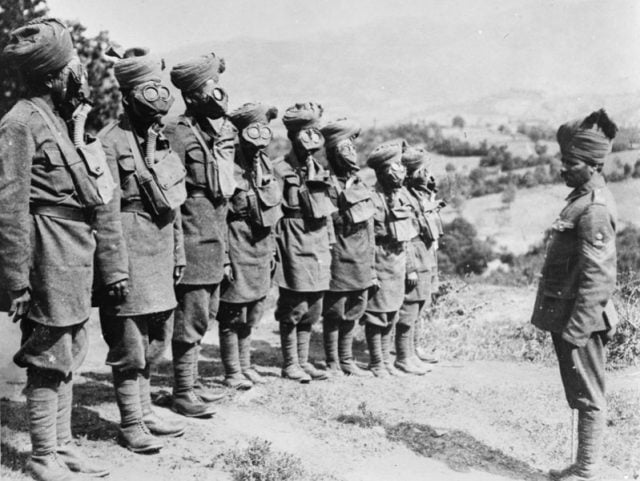
Indian troops were able to fight only because of a declaration by the British Government, the Montagu Declaration which was a vaguely put up self-rule reality in India.
After returning to India, Mahatma Gandhi asked the people to join the War with the aim that corresponded to that of the INC.
The opposition? Yes, there was opposition as well.
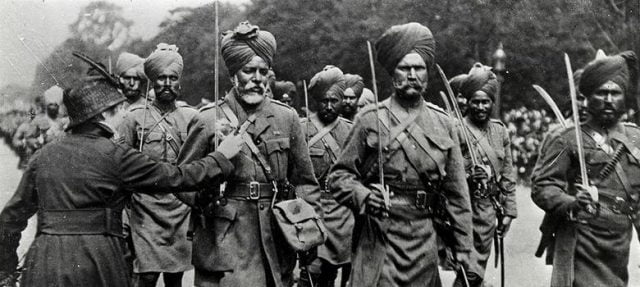
There were revolutionaries such as Jatindranath Mukherjee (leader of the Yugantar Party) which wanted to reduce the support of Indians during the war by aligning with the Berlin Committee supported by German Intelligence.
There were also groups in the USA like the Ghadar Party in California who were printing a newspaper for the small but rapidly growing Sikh diaspora.
Unfortunately, they failed in their objectives by 1917.
The Indian Fight
Now with the support of its people, the Army fought in different Expeditionary forces organized during the war.
Most of these men came from the Punjab Province (today’s Punjab and Haryana State in India and Punjab Province in Pakistan).
They were divided into Expeditionary Forces. Expeditionary Force A served in France fighting battles at Ypres and Neuve Chapelle on the Western Front.
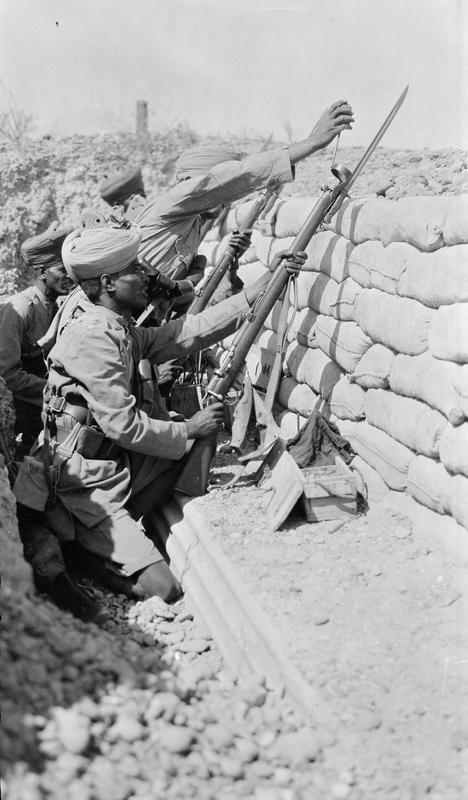
Expeditionary Forces B and C fought in East Africa, one of their prominent battles being the battle of Tanga. Expeditionary forces D fought in Mesopotamia (today’s Iraq and Iran) where many of them were captured by the Ottomans at the Siege of Kut.
Expeditionary Force E fought in the battle of Megiddo during the Sinai and Palestine Campaign. Expeditionary force F fought in the Suez Offensive, while Expeditionary Force G fought in the famed Gallipoli Campaign.

The Losses of The Brave Soldiers
Our brave men sacrificed a lot to protect the UK valiantly. The total losses recorded were 62,000 dead and another 67,000 wounded in action.
Though less compared to their British counterparts, their actions impressed armies worldwide seeing their rigorous discipline and fighting spirit throughout.
These men have been commemorated in memorials worldwide including the Chattri memorial in the royal pavilion at Brighton (United Kingdom) and the Neuve-Chappele Memorial in France.
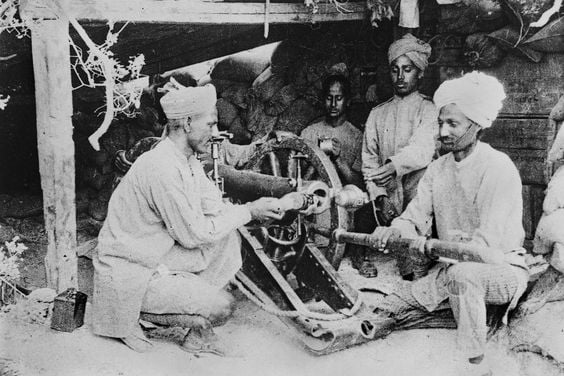
Fourteen Victoria Crosses were won by the Indian Army, most of them in the in the Western Front. Many other awards were also given out to these men for their exemplary bravery.
A hall known as the Indian Memorial Hall was built by the Royal Indian Engineers in the Sandhurst Military Academy, UK to commemorate their campaigns throughout the world on its stained glasses till World War II.
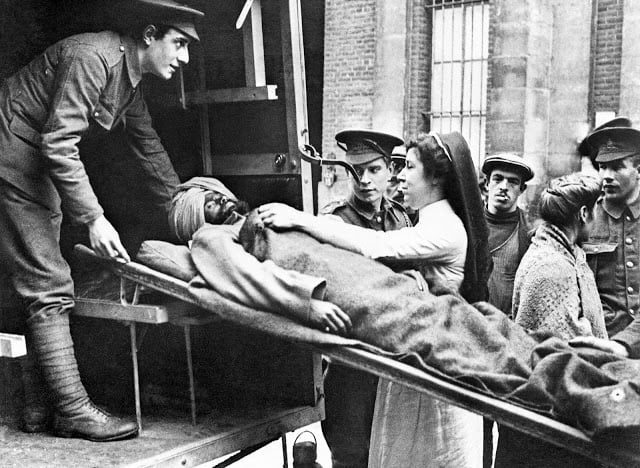
The Traumatic Aftermath
The aftermath was harrowing. When the troops returned in 1919, Britain was reluctant on its promises.
Protests erupted in Punjab province from where a large number of young men were enlisted to fight the War. The response was simply heartbreaking.
The massacre at Jallianwala Bagh took place. As a result of the Rowlatt Acts, many leaders were sent to the Andaman Islands to serve in the infamous Cellular Jail in Port Blair (also known as the Kala Pani Prison).

The Vernacular Act was put into being and Congress started the Non-cooperation movement.
Many of the men suffered from shell shock or today’s Post Traumatic Stress Disorder (PTSD) which is evident from their records and personal letters.
Untold History
The Last Year of the Commemoration looms around as the End of the Centenary of the Great War comes to an end.
As I pass through the Indian Gate, I wonder what those years could have been to live with heroes like Naik Darwan Singh Negi hailing from my state of Uttarakhand withstanding rigorous opposition.
When one part of our country was busy fighting, Indians were still struggling in Britain with Mathematical geniuses like Srinivasa Ramanujan carving out a niche for himself.
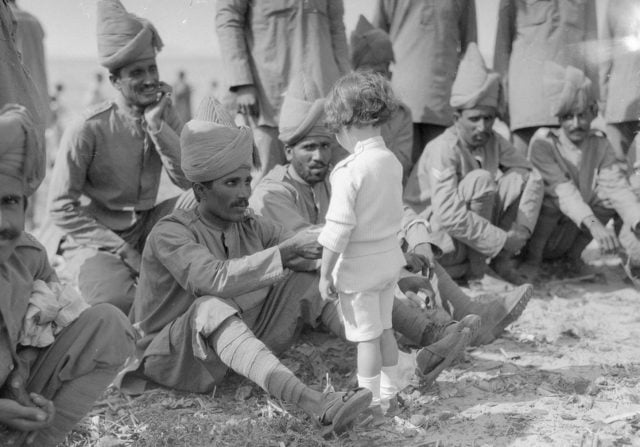
History might have forgotten the role of these men but we must strive to remember that their sacrifices were never in vain to see India independent.
Image Credits: Google Images
More Recommendations:
Dinkoism: The Spoof Religion From Kerala Where A Cartoon Mouse Is God





























